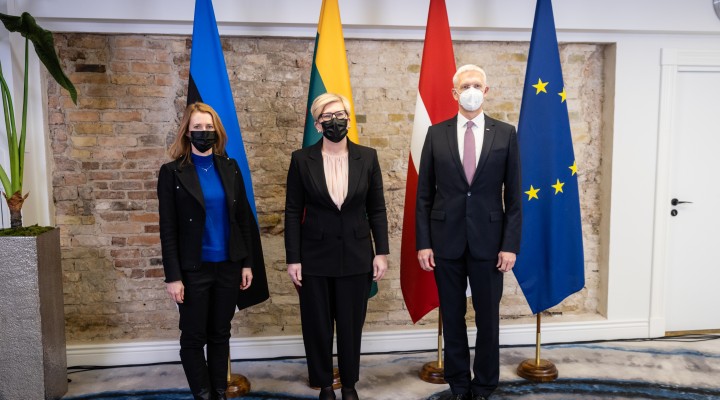The turbulent times are leading us to even closer cooperation – we discussed the restrainment of the Lukashenko regime, but also our response to the growing threats and offensive messages from Russia. In addition to the growth of hostile messages, we are also seeing more active military action by Russia towards Ukraine.
We will not accept that an authoritarian state, through military means and threats of force, is trying to force Ukraine to change its decisions – we see a desire to divide Europe, by force or with threats, into spheres of influence. This is an unacceptable and morally wrong policy and this must also be made clear to Russia.
Both the European Union and NATO are following the developments closely. We are ready to respond to the aggression against our partner countries – the actions of Russia in Ukraine will not go unanswered by us or our allies. Just as we have been able to maintain a strong line in the European Union in imposing sanctions on Belarus, we are ready to react jointly and swiftly as Russia continues to escalate towards Ukraine.
I will also visit the Lithuanian–Belarusian border in Medininkai today. Lithuania has coped well with the hybrid attack – I will get acquainted with the Lithuanian experience on the spot and I will also meet with the Estonian police officers who have gained direct and valuable experience in the front line of the hybrid attack in the ESTPOL 5 team.
Modern connections are an important part of our energy security and growth. This year was very successful in terms of the project to connect the Baltic electricity networks to mainland Europe. New connections have emerged between Estonia and Latvia as well as Lithuania and Poland. We hope that the current stage of the Connecting Europe Facility will help us to complete this work effectively. We also have excellent cooperation with Latvia in establishing a joint wind farm in the Baltic Sea, which we will continue to develop rapidly.
However, right now, the biggest concern for all of us is the electricity prices. The rising energy prices are forcing us to act quickly. We need a stronger framework for the single electricity market that can withstand high prices and crises. We must work together to find ways to ensure more stable electricity prices in the Baltic States. The best way to do this is to invest in new production capacity and energy savings. The Baltic States, together with the rest of Europe, must work together to increase their security of supply and speed up the introduction of new electricity capacity on the market. Electricity price shocks should not become the new norm, and it is understandable that people and businesses expect support from governments. I think it is important that the issue of energy prices is discussed by the EU Council in Brussels next week. I will make sure to raise the issue there as well.
I am pleased that the establishment of Rail Baltic is progressing in all three countries. We are working together to show tangible results and complete the project as quickly as possible. Estonia considers it important to pay special attention to the railway connections between the Baltic States.
Renewable energy and clean transport are two important components of our future economic model, in which sustainable economic growth will be achieved without damaging the nature and the health of the people. In the forthcoming negotiations on the “Fit for 55” proposals in the European Union, we have a number of common interests and positions with Latvia and Lithuania on which we can work together. As such we can achieve more than when working alone. We are working to ensure that solutions take into account our regional specificities and socio-economic aspects. In this way, we will also be able to secure the support of our people for the necessary reforms. The transition to climate neutrality offers many opportunities, but also requires difficult decisions. In our negotiations with the European Union’s partners, we must keep the focus on the whole picture and work together to find ways to mitigate the effects of change on the most vulnerable families and regions. Only then will the green transition become the green transition of the people.
Thank you!
